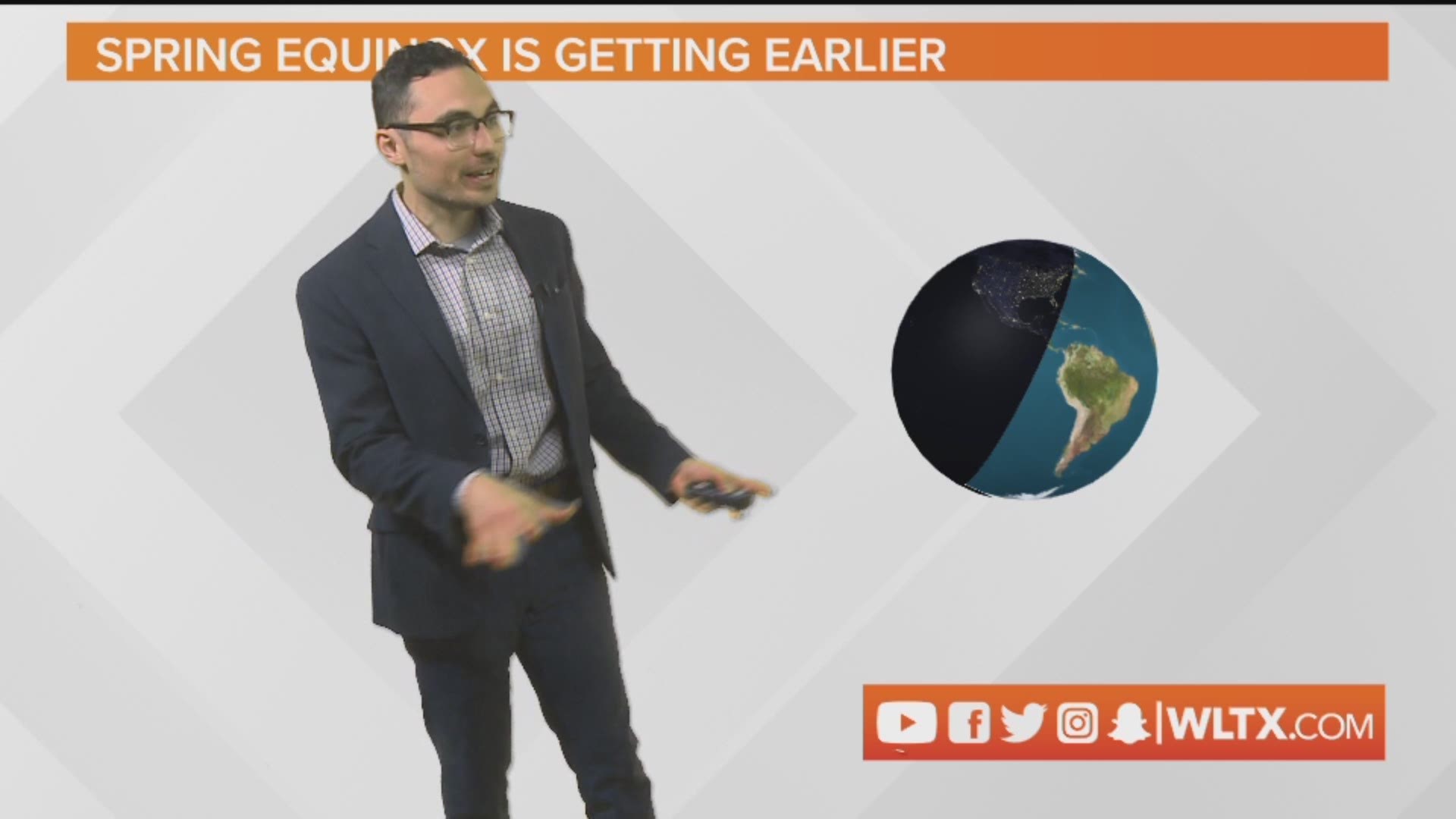The spring equinox - the moment when daylight and night are equal across the world - is on Thursday, March 19 this year, which is the earliest it's ever been in our lifetimes. The last time spring fell this early was 1896.
This early date has no impact on our weather, and there's an interesting blend of astronomy and time-keeping that explains this all. It turns out, our calendar isn't perfect.
Earth revolves around the sun and completes a year in 365 days, 5 hours, 59 minutes, and 16 seconds according to NASA. The true amount of time it takes for Earth to orbit the sun is called the "tropical year" because of the way it's measured. The Earth's orbit around the sun actually can vary slightly from year to year, but it's never exactly 365 days. That's why our calendar needs adjustments like leap years to keep things in sync; however, leap years don't do the trick on their own.
A leap year typically occurs once every 4 years, but every 100 years there's an exception. (1896 was a leap year with 366 days and 1904 was a leap year, but 1900 was not a leap year.) If this rule wasn't applied, our calendar year would move too quickly relative to the true time (tropical year) it takes for the earth to orbit around the sun. There is another important, and rarer, leap year rule. Years divisible by 4 and 100, are leap years. So the year 1000, 1600, and most recently, 2000 were leap years with 366 days.
In the video above, we use cars to demonstrate the never-ending quest to make our calendar year sync up. It's worth a watch if you're a visual learner.
The fact that 2000 was a leap year is like pushing the accelerator on the car. Every leap year since 2000, the first day of astronomical spring has crept earlier and earlier. We haven't noticed the difference because, before this year, the date was March 20. This year, the spring equinox falls on March 19 at exactly 11:56 pm EDT. Of course, parts of the world in different time zones will still experience spring on March 20.
Every leap year will feature the earliest spring equinox we've experienced in our lifetimes. This will happen until the year 2100 when we skip a leap year and the calendar year trends behind the true year.
RELATED: Social distancing in the garden

